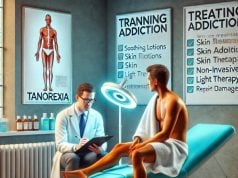
Two seconds of metallic hiss, an icy rush in the lungs, then the world tilts cartoon-bright: laughter explodes, limbs tingle, and worries vanish behind a cotton-wool fog. For many party-goers a balloon of “laughing gas” is simply a fleeting giggle. Yet for a growing number of users, one balloon becomes ten, then a crate of 600 canisters every weekend—and suddenly numb toes, memory slips, and relentless cravings replace the laughter. Nitrous oxide addiction is a real and rising phenomenon. This guide unpacks how a dental anaesthetic turned street high can rewire reward circuits, damage nerves, and derail lives—and shows, step by step, how people reclaim health and happiness without the gas.
Table of Contents
- Scope, Trends, and Global Usage
- Biological and Psychosocial Drivers
- Identifying Addiction: Clinical Signs and Diagnosis
- Health Hazards and Social Repercussions
- Treatment Approaches and Recovery Roadmaps
- Frequently Asked Questions
Scope, Trends, and Global Usage
From operating theatre to festival field
Invented in 1772 and popularised by 19th-century “laughing-gas parties,” nitrous oxide found a respectable home in dentistry and childbirth wards. But cheap, legal cartridge sales (whippets) and viral social-media clips have rekindled recreational use. In 2024:
- Europe: Nitrous oxide ranked the second-most used inhalant among 15- to 24-year-olds, with 8 % reporting past-year use. The Netherlands, UK, and France issued emergency bans on large cylinders after ER visits tripled in four years.
- North America: Convenience-store cream chargers fuel college “nangs” culture; poison-control calls for nitrous exposures jumped 160 % since 2020.
- Asia-Pacific: Festival seizures of 20-kg tanks rose sharply in Australia and New Zealand, mirroring EDM scene adoption.
- Polydrug overlap: 40 % of heavy users pair nitrous with MDMA or ketamine, compounding cognitive and respiratory risks.
Why dependence goes unnoticed
Because each high lasts under one minute and cartridges are legal kitchen goods, users—and often clinicians—underestimate addiction potential. Binge patterns (dozens to hundreds of hits per session) produce the same compulsive cycles seen in longer-acting drugs, yet lack the visible cues of needles or smoke, making nitrous misuse a silent epidemic.
Biological and Psychosocial Drivers
Neurochemical quick hit
| System | Nitrous effect | Addiction relevance |
|---|---|---|
| NMDA receptor antagonism | Produces dissociation and euphoria, similar to ketamine. | Users chase trance-like calm, reinforcing redosing. |
| GABA and opioid modulation | Adds anxiolytic warmth and mild analgesia. | Relieves social anxiety, emotional pain; fosters psychological reliance. |
| Dopamine release in nucleus accumbens | Short burst of reward signalling. | Rapid peak-and-crash drives repetitive balloon cycles. |
Vitamin B12 hijack
Nitrous oxidises active B12, crippling methionine synthase and myelin repair:
- Subacute combined degeneration of the spinal cord
- Peripheral neuropathy (tingling, numbness, gait ataxia)
- Cognitive fog and mood swings
People with borderline B12 (vegans, malabsorption disorders) deteriorate faster, fuelling more use to escape discomfort—an insidious feedback loop.
Psychological magnets
- Instant anxiety relief during social gatherings or stressful study nights.
- Minimal hangover compared to alcohol, giving illusion of safety.
- Ritual & novelty: Crack charger, fill balloon, inhale—quick, shareable, and Instagram-able.
- Legality comfort zone: Kitchen-supply legality lowers perceived risk.
Risk-amplifying environments
- Music festivals & raves — vendors sell balloons openly; bass vibrations amplify dissociative high.
- Student dorms — cheap bulk orders split among flat-mates.
- Professional kitchens — easy pilfering of catering-size cylinders.
- Remote working — solitude plus free evenings invite binge canister use unnoticed.
Genetic & comorbid factors
Polymorphisms in MTHFR and TCN2 genes can predispose to quicker B12 depletion. Co-existing ADHD, social anxiety disorder, or trauma histories increase self-medication motive.
Identifying Addiction: Clinical Signs and Diagnosis
Behavioral warning lights
- Escalating quantity: From a few party balloons to 50–100 cartridges nightly.
- Time sink: Hours lost cracking, filling, inhaling.
- Neglected duties: Missing lectures or shifts due to exhaustion or neuropathic pain.
- Stashing patterns: Crates hidden in wardrobe, spent steel litter under bed.
- Failed cut-downs: Intent to limit “just ten” turns into full box.
Physical and neurological clues
| Symptom | Onset | Clinical note |
|---|---|---|
| Paresthesia in feet/hands | Weeks–months | Early B12 deficiency nerve damage. |
| Unsteady gait / falls | Months | Posterior column spinal cord injury. |
| Finger ulcers / frostbite | Immediate | Direct contact with freezing gas. |
| Blue lips / dizziness | Acute sessions | Hypoxia from oxygen displacement. |
| Memory lapses | Chronic | NMDA disruption and B12 deficiency. |
Diagnostic work-up
- Detailed substance history — number of cartridges per session, frequency.
- Neurological exam — Romberg, vibration sense, reflexes.
- Labs: Serum B12, methylmalonic acid (elevated), homocysteine (elevated).
- MRI spine — T2 hyperintensity in dorsal columns for advanced cases.
- Fagerström-like inhalant dependence scale (adapted) to quantify severity.
Severity categories:
- Mild: <50 hits/week, no neuropathy.
- Moderate: 50–200 hits/week, early sensory changes.
- Severe: >200 hits/week, functional impairment, MRI changes.
Health Hazards and Social Repercussions
Medical fallout
| System | Risk | Mechanism |
|---|---|---|
| Nervous | Myeloneuropathy, cognitive decline | B12 inactivation, NMDA antagonism |
| Hematologic | Megaloblastic anaemia | Impaired DNA synthesis from B12 loss |
| Respiratory | Hypoxia, asphyxiation | Oxygen displacement in lungs or plastic-bag inhalation |
| Cardiovascular | Arrhythmia, hypotension | Severe hypoxia episodes |
| Musculoskeletal | Falls, fractures | Ataxia + dizziness |
Dental and ENT injuries
Repeated balloon biting chips incisors; high-pressure nozzle burns lips and pharynx.
Psychosocial impact
- Academic/work decline due to brain fog and neuropathic pain.
- Relationship strain—friends alarmed by constant hissing sound, partners tired of neurological complaints.
- Financial drain: Heavy users spend \$50–150 weekly on cartridges; industrial tanks cost more plus rental fee.
- Legal trouble: Many jurisdictions now fine on-street possession; driving under influence leads to DUI charges.
Environmental footprint
Thousands of discarded steel chargers litter parks and beaches, prompting city clean-up costs and community backlash.
Treatment Approaches and Recovery Roadmaps
Acute medical care
- Cease nitrous use immediately — continued exposure worsens nerve damage.
- Vitamin B12 repletion — intramuscular hydroxycobalamin 1 mg every other day for 2 weeks, then weekly until levels normal & symptoms plateau.
- Neurology consult for severe ataxia or MRI changes.
- Folate supplementation if deficient; supports DNA synthesis.
- Physical therapy — gait training, proprioception exercises.
Psychosocial and behavioural therapies
| Approach | Key elements | Ideal candidate |
|---|---|---|
| Motivational Enhancement Therapy (MET) | Resolve ambivalence, highlight nerve-damage risks. | Early users not yet neurologically impaired. |
| Cognitive-Behavioural Therapy (CBT-NO) | Trigger identification (festival, boredom), coping strategies, cognitive restructuring. | Moderate dependence. |
| Contingency Management | Vouchers for negative nitrous tests or cartridge-free weeks. | Adolescents & college students. |
| 12-step / SMART Recovery inhalant groups | Peer accountability, relapse-prevention sharing. | Users needing community support. |
Pharmacological support
- Bupropion — mild stimulant properties aid attention and reduce cravings.
- N-acetylcysteine (NAC) 1,200–2,400 mg/day — modulates glutamate cravings; promising in inhalant studies.
- Gabapentin or pregabalin — neuropathic-pain relief during nerve recovery.
- SSRI/SNRI — manage comorbid anxiety or depression unmasked after cessation.
Harm-reduction for ambivalent users
- Minimum 5-minute oxygen rest between balloons; avoid enclosed spaces.
- Use food-grade dispensers with filters to reduce oil particle inhalation.
- Wear gloves to prevent frostbite.
- Limit to <20 hits/session and strict monthly quota while pursuing taper plan.
8-Week Freedom Blueprint
| Week | Focus | Action steps |
|---|---|---|
| 1 | Awareness | Log cartridges, triggers, B12 blood test. |
| 2 | Medical | Start IM B12; schedule neuro exam. |
| 3 | Taper start | Cut session size by 30 %; swap every third balloon for deep-breathing exercise. |
| 4 | Trigger swap | Replace festival use with sober dance nights, invest in foam earplugs/lights for sensory fun. |
| 5 | Strength rebuild | Begin resistance training & B-complex vitamins. |
| 6 | Social shift | Join hobby group, delete “whippet” Telegram channels. |
| 7 | Zero-use test | 7-day abstinence challenge, daily journal, contingency rewards. |
| 8 | Relapse guard | Draft crisis plan, arrange quarterly B12 check, celebrate milestone with meaningful purchase (instrument, class). |
Long-term relapse prevention
- Bi-monthly blood checks for B12 until stable six months.
- Neuropathy watch—return of tingling indicates slip.
- Peer mentor from recovered nitrous group.
- Lifestyle anchors: balanced diet, sleep hygiene, aerobic fitness boost remyelination and dopamine balance.
Prognosis
Early cessation plus B12 therapy often reverses symptoms within 3–6 months. Severe spinal-cord lesions can leave residual gait issues, but neuroplasticity and physio yield functional gains over 1–2 years. Psychological wellbeing typically rebounds as cognition clears and social ties mend.
Frequently Asked Questions
Can you be physically addicted to nitrous oxide?
Yes. While classic withdrawal shakes are absent, powerful psychological cravings and tolerance drive compulsive use, and B12-linked nerve pain can push further inhalation to mask discomfort—forming a physical-psychological dependency loop.
How many balloons per day are “too many”?
Neurologists report nerve injury after as few as 40–50 cartridges in one sitting or 200 per week. Any binge beyond party experimentation should trigger a review and B12 check.
Will vitamin pills alone protect me?
Oral B12 is poorly absorbed in the presence of nitrous-induced inactivation. High-dose intramuscular injections plus complete abstinence are essential for safety.
Is nitrous safer than alcohol or cocaine?
Short-term cardiovascular risk is lower, but repeated nitrous can cause irreversible paralysis. Calling it “safe” overlooks nerve and cognitive damage unseen in casual drinkers.
Can I use dental-office laughing gas occasionally?
Clinical settings mix nitrous with oxygen and monitor levels—rarely linked to addiction. Inform your dentist of any past misuse so concentrations and exposure time remain brief.
How long after quitting until nerves heal?
Tingling often eases within weeks of B12 injections. Balance and proprioception may take months; full spinal-cord lesions can need years of rehab.
Disclaimer
This guide is for educational purposes only and does not replace professional medical advice. Always consult qualified clinicians regarding nitrous-oxide use, nerve symptoms, or treatment strategies.
Found this helpful? Please share on Facebook, X (formerly Twitter), or your favourite platform, and follow us for more science-backed wellness content. Your support fuels our mission—thank you!










